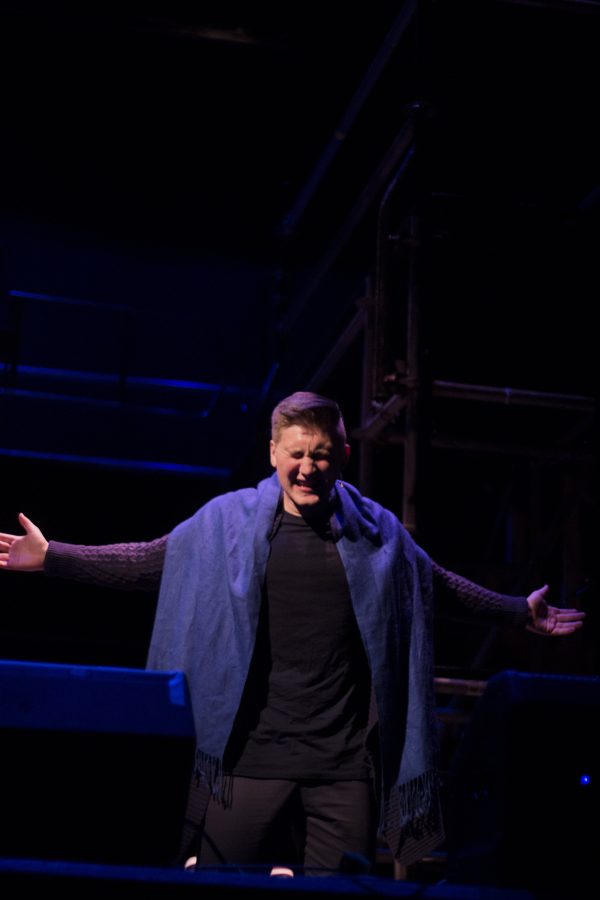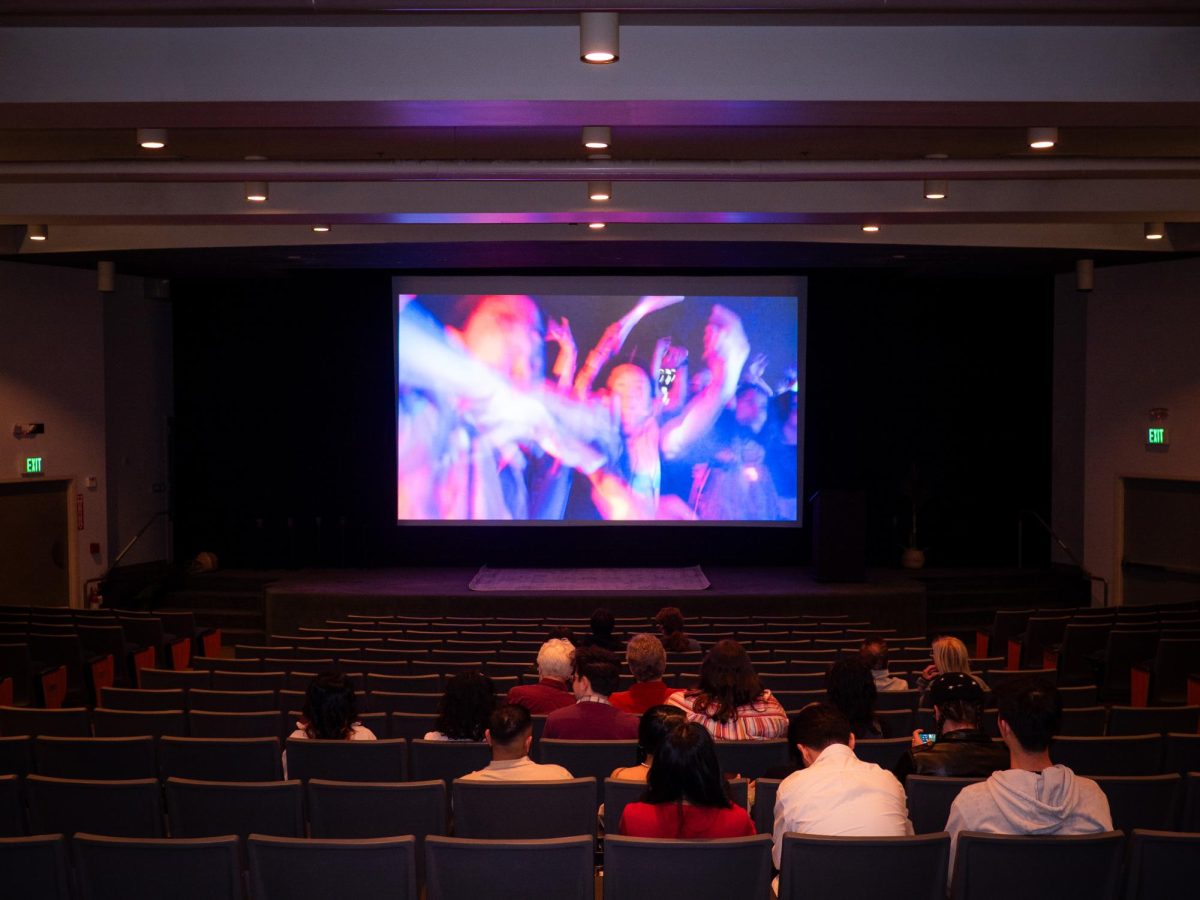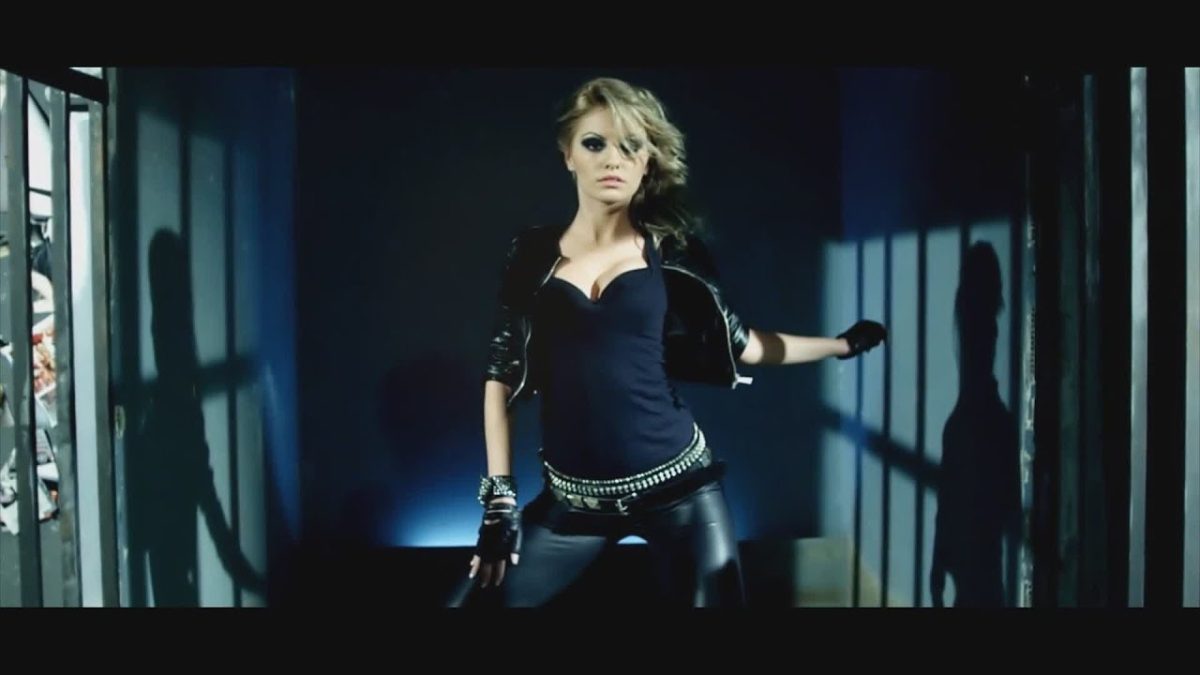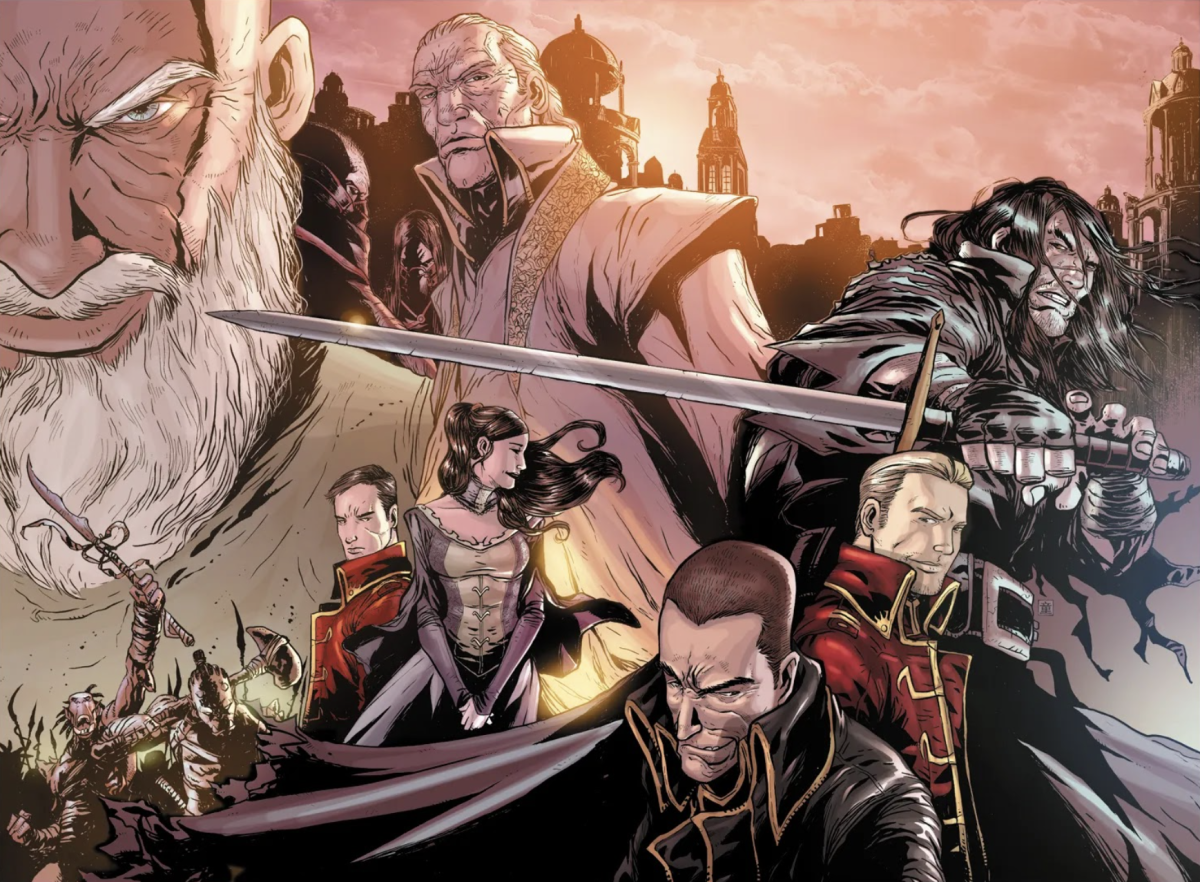“Jesus Christ Superstar” gave new flair to the Gospels while simultaneously exhibiting the talent of the student organization Muir Musical.
The theater darkens as the overture to “Jesus Christ Superstar” fills Mandeville Auditorium. Audience members are greeted with a pantomime of the apostles running across the stage, fleeing the pursuit of Roman guards. A woman in a sunflower-colored dress is seen picking up money a man throws on the floor and the guards overtake her, leading her to what should be her execution for prostitution. These proceedings are ceased, though, when a man in white robes approaches the crowd, silencing them. The crowd walks away dejectedly, as the man takes off his shawl and places it on the woman, revealing himself to be Jesus of Nazareth (Andrew Paiva) and the woman to be Mary Magdalene (Isabella Calabrese).
So begins a musical that adeptly intertwines the traditional story of Jesus’ last week on Earth with rock ’n’ roll music. With lyrics by Tim Rice and music from Andrew Lloyd Webber, this play is not like your average Sunday school class. Rather than focus solely on the familiar acts and teachings of Jesus, the musical delves into Judas Iscariot’s (Jake Bradford) side of the story. Once Jesus saves Mary and brings her into their group, Judas fails to understand why he is associating himself with someone so risque and starts to pay attention to the other ways Jesus is supposedly contradicting himself. Audience members see a Jesus who is determined and holy to be sure, but is overpowered by masses of people wanting him to heal them or overthrow Rome. They do not listen to Jesus’ preachings that power comes from beyond violent acts, or his frustrated protests that he is only one man and can’t heal all of them, swarming and celebrating him in a manner reminiscent of a crowd rushing a popstar. Eventually Judas is concerned enough for the safety of Jesus and Jerusalem that he turns to the Pharisees Caiaphas (Shane Ramil) and Annas (Clara Shuler), who are secretly plotting to murder Jesus to secure their positions of authority.
“It was definitely a challenge,” said Andrew Paiva on playing the role of Jesus. “I’ve grown up Christian my whole life and I am a Christian, and so then playing this character was definitely something I wanted to do well, [and] do a good job portraying the truth of it.” He then went on to explain how he reread excerpts from the Bible as well as other historical documents to truly harness the role. Overall the play took a definitively more secular tone in regard to the Gospels, making for more of a historical fiction musical than a pious one, and the actors handled it well. Jesus was tired and sad, yet still glimmered with determination. Shuler discussed how she realized that her character of Annas was all about control, and channeled this powerfully through her singing and posture. King Herod (Justin David Sullivan) was nothing short of fabulously extravagant, and Pontius Pilate (Miguel A. Muñoz) descended from a pleading, confused judge to a vicious executor. The character of Mary was a far more influential and empowering role than is attributed to her in most retellings of the Bible, while Judas portrayed a man full of love for a friend contrasted with anger, turmoil, and guilt.
“If I ever have a character that is seen as a bad guy and has these negative aspects surrounding them … I think there’s always a piece of good you can draw from it to start,” Bradford said regarding his time as Judas. “I think that breaking down these preconceived notions of who these characters are is something I definitely learned in this process.”
Produced by Muir Musical during the first two weekends in April, “Jesus Christ Superstar” not only showcased the talent of the UC San Diego student body, but also allowed those who normally wouldn’t be involved with school productions to find a welcoming, creative community. Muir Musical is an entirely student-run organization that produces and performs a Broadway musical every spring. The production crew, actors, and even the orchestra are comprised only of students. What’s more is that Muir Musical is open to anyone interested in being involved with their musical production. One does not have to be a theatre major or minor, have experience in acting, or even be in Muir College to participate.
“It’s a great outlet for people who love theater and are passionate about theater if that’s not their major,” said director Austyn Myers. “I look on that stage and I see that somebody in the cast is studying backstage for their engineering test the next day, [that] we have [biochemistry] majors, [and that] all of these different people who have different futures come together to share a common passion along with all the people who are here and this is what they want to do.”
If their dedication to working with any student willing to display their talent and put in the necessary hours isn’t impressive enough, appreciation for Muir Musical only increases after learning they only have 12 weeks to get everything ready before opening night. Patricia Mahaffey, the executive producer and assistant vice chancellor of Student Life, is the UCSD staff member who selects the student to direct the play. The rest from this point on depends on the students, with the first challenge being selecting a musical to perform after taking into consideration what rights they can attain and what other companies are producing in the area. Then there are auditions in the fall quarter, followed by 10 weeks of rehearsal that carry through winter quarter. This leaves them only two remaining weeks, one for building the set and one for perfecting technology use involved with the performance.
Despite this short amount of time to prepare a set, the production staff of Muir Musical crafted a stage that allowed the weight and artistry of the performance to extend beyond the acting and music, into the play’s very materials. The set on stage — consisting of a basic metal framework with two levels — was constantly evolving. The cast rearranged attachable staircases leading to the upper level as needed throughout the performance, using the set changes to create an interactive experience. This interactivity was further highlighted by the mood lighting that swept the stage from both above and within the framework, visually reflecting scenes’ implied emotions. Costumes were clearly evocative of traditional Biblical imagery but were made out of modern clothing styles. For instance, to show their wealth and solidarity, the Pharisees all wore matching suits. The apostles and Jesus wore flowing shirts and pants of browns and tans, with the exception of Judas, who dressed in blues and grays. The simplicity of the backgrounds and garments allowed the focus of the play to rest entirely on the actors’ performances.
“I found that I’m definitely an intimate theater-type director, I really like focusing on the small details,” said Myers when discussing how he was inspired by his personal taste and Mandeville’s theater space. “I was able to take that show where it’s usually just about spectacle, and strip it down and ask, ‘Okay, what is the story here?’”
The end result of all this hard work definitely paid off. Though there were a handful of technical difficulties involving microphones leading to unclear singing, and sometimes confusion from audience members who were unfamiliar with the contents of the New Testament, overall “Jesus Christ Superstar” was truly a spectacular show. It illustrated more than just its actual plot. This was a production that allowed the passion of its students –– many who would normally not be involved with a theater production –– to really shine through and illustrate how communities of creativeness will develop anywhere there are those interested.
Location: Mandeville Auditorium
Dates: April 7-8, 12-14
Starring: Andrew Paiva, Jake Bradford, Isabella Calabrese, Miguel A. Munoz, Ben Little, Justin David Sullivan, Kevin Kubo, Shane Ramil, Clara Shuler
Image courtesy of Muir Musical








